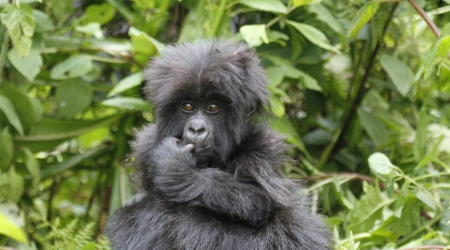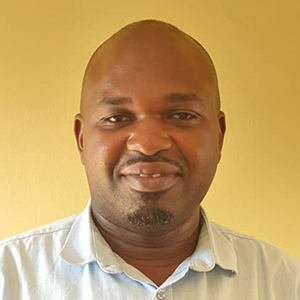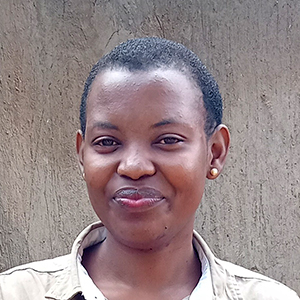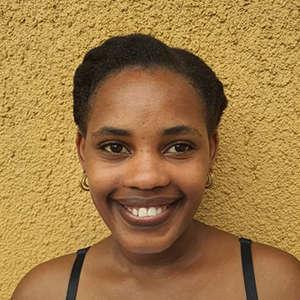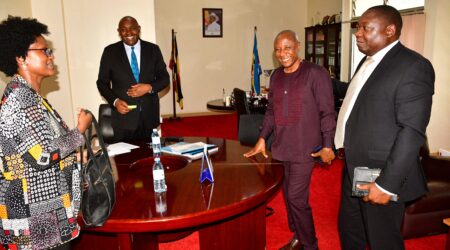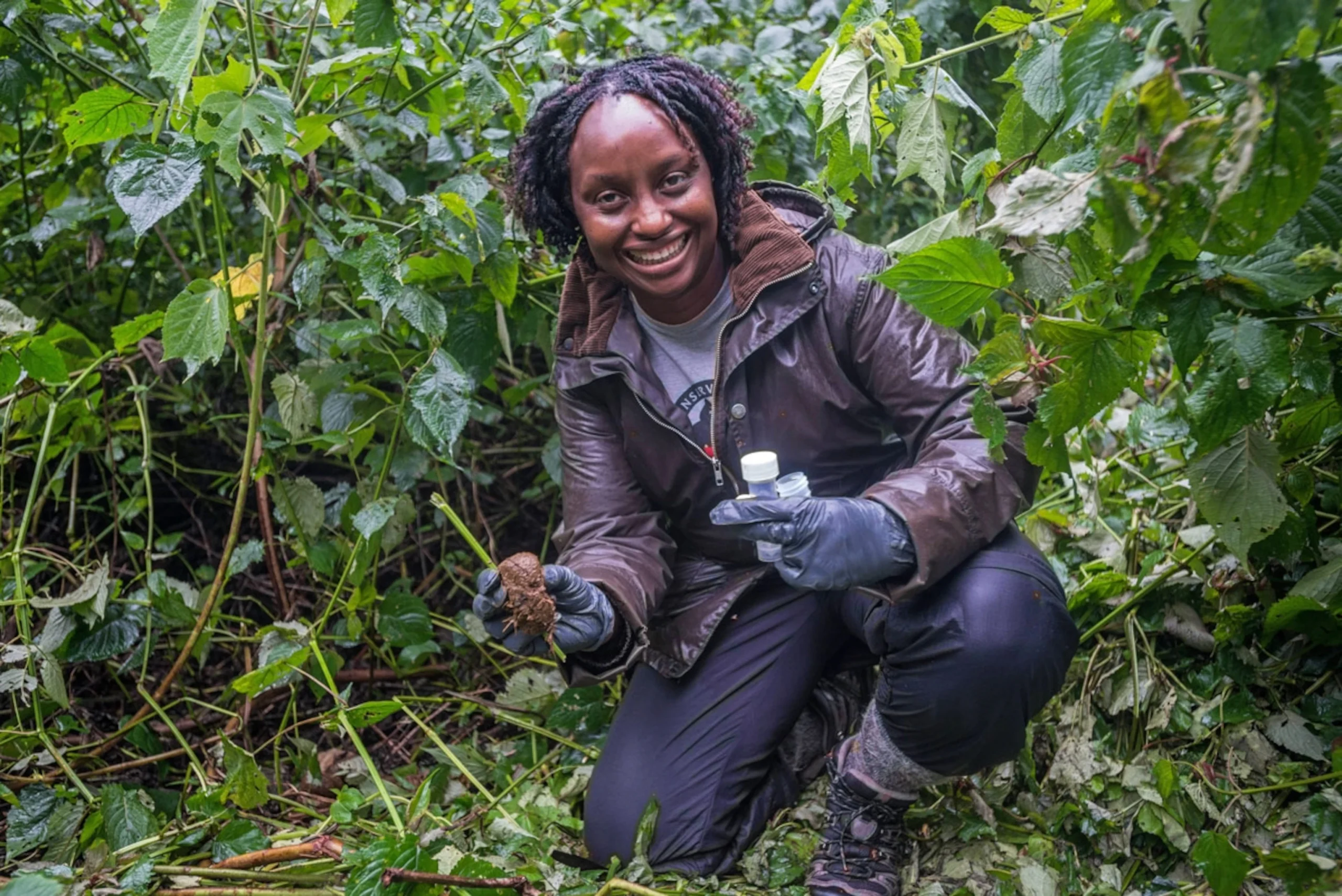Uganda hosts some of the most historically layered and actively revered religious sites in East Africa. These are not isolated monuments. They are living institutions shaped by memory, migration, and devotion.
From the sacred hills of Buganda kingship to the modern cathedrals of Kampala, faith continues to play a structuring role in civic life. Christianity and Islam dominate, yet neither eclipses the ongoing significance of traditional African religions.
According to the 2014 National Population and Housing Census, approximately 39 per cent of Ugandans identify as Roman Catholic, while 32 per cent follow the Anglican Church. Muslims represent about 14 per cent. Pentecostal and Evangelical movements continue to grow, alongside smaller communities such as the Bahá’í, Orthodox, and Seventh-day Adventists.
Moreover, religious heritage intersects with national history. Martyrdom shaped the Christian identity of Uganda. Interfaith coexistence shaped its post-colonial civic frameworks, and pilgrimage, in many parts, overlaps with tourism.
You may already be familiar with Namugongo or the Gaddafi Mosque. Yet beyond these landmarks lies a more complex geography of shrines, altars, and sacred forests. This guide outlines them methodically.
Historical Background: Faith And Nationhood
Religious identity in Uganda evolved through layers of contact, conflict, and continuity. The story begins long before mission schools or colonial borders.
In the pre-colonial kingdoms of Buganda, Bunyoro, and Toro, religious life centred around clan spirits and ancestral shrines. These were led by spiritual mediums known as balongo or emmandwa custodians. The spiritual served the political. Sacred groves were often aligned with royal sites.
Islam entered in the 1840s through coastal Swahili-Arab traders. It gained early footing in Buganda under Kabaka Suuna II and later Muteesa I, who invited Quranic teachers to his court.
Christianity followed shortly after. Anglican missionaries from the Church Missionary Society arrived in 1877. Catholic White Fathers followed in 1879. The two missions built separate schools, churches, and medical centres, each aligned with rival factions within the Buganda court.
The Uganda Martyrs episode between 1885 and 1887 marked a decisive moment. 45 young Christian converts—both Catholic and Anglican—were executed on the orders of Kabaka Mwanga II. Their deaths galvanised missionary commitment and became a symbol of Uganda’s Christian witness.
Islam persisted under local sheikhs and coastal scholars. Meanwhile, traditional religions maintained footholds in rural areas. Many continued their practices alongside new Abrahamic doctrines.
Under British colonial rule, Christianity was institutionalised. Mission schools shaped Uganda’s early political elites. The Church of Uganda and the Roman Catholic Church emerged as central actors in governance, land ownership, and public morality.
By independence in 1962, religious institutions were entrenched. Political power, however, soon tested them. During Idi Amin’s rule (1971–1979), the Anglican Archbishop Janani Luwum was murdered. Other leaders went into exile. The era underscored how religion and state could collide.
Since the 1990s, religious liberalisation has allowed for Pentecostal growth, Islamic expansion, and revivalist traditional movements. Uganda’s religious field today is competitive and also active.
Major Christian Sites in Uganda
Christianity in Uganda is deeply tied to place. Shrines, cathedrals, and monuments preserve both theology and political memory. Below are key locations across denominations.
Namugongo Martyrs Shrines (Catholic and Anglican)
Namugongo remains Uganda’s most visited Christian site. It commemorates the execution of 45 young converts between 1885 and 1887 on orders of Kabaka Mwanga II.
Two separate shrines stand on the site. The Catholic Basilica of the Uganda Martyrs, completed in 1975, features a circular design supported by 22 pillars, each honouring a Catholic martyr. It was elevated to minor basilica status by Pope Paul VI.
Adjacent is the Anglican Martyrs Shrine, constructed in the 1990s. It marks the spot where Anglican converts met their death. The site includes a chapel, amphitheatre, and educational museum.

Every year on June 3rd, the site receives over two million pilgrims from Uganda, Kenya, Rwanda, South Sudan, and the diaspora. Security planning and crowd management often begin months in advance.
Moreover, the Namugongo site includes a large water spring, believed by many pilgrims to hold healing properties. The Uganda Episcopal Conference oversees site development and maintenance.
If you visit in May or early June, accommodation across Kampala and Wakiso often fills quickly. Planning is not just advisable. It’s essential.
Rubaga Cathedral (Kampala)
Rubaga Cathedral serves as the seat of the Roman Catholic Archdiocese of Kampala. Construction began in 1914 and was completed in 1925.
It stands on Rubaga Hill, formerly the palace of Kabaka Muteesa I. The location reflects the symbolic handover of royal ground to the Church.
Its twin red-brick towers are visible from several points across the city. The cathedral holds tombs of key Catholic figures, including Archbishop Joseph Kiwanuka, the first African archbishop south of the Sahara.
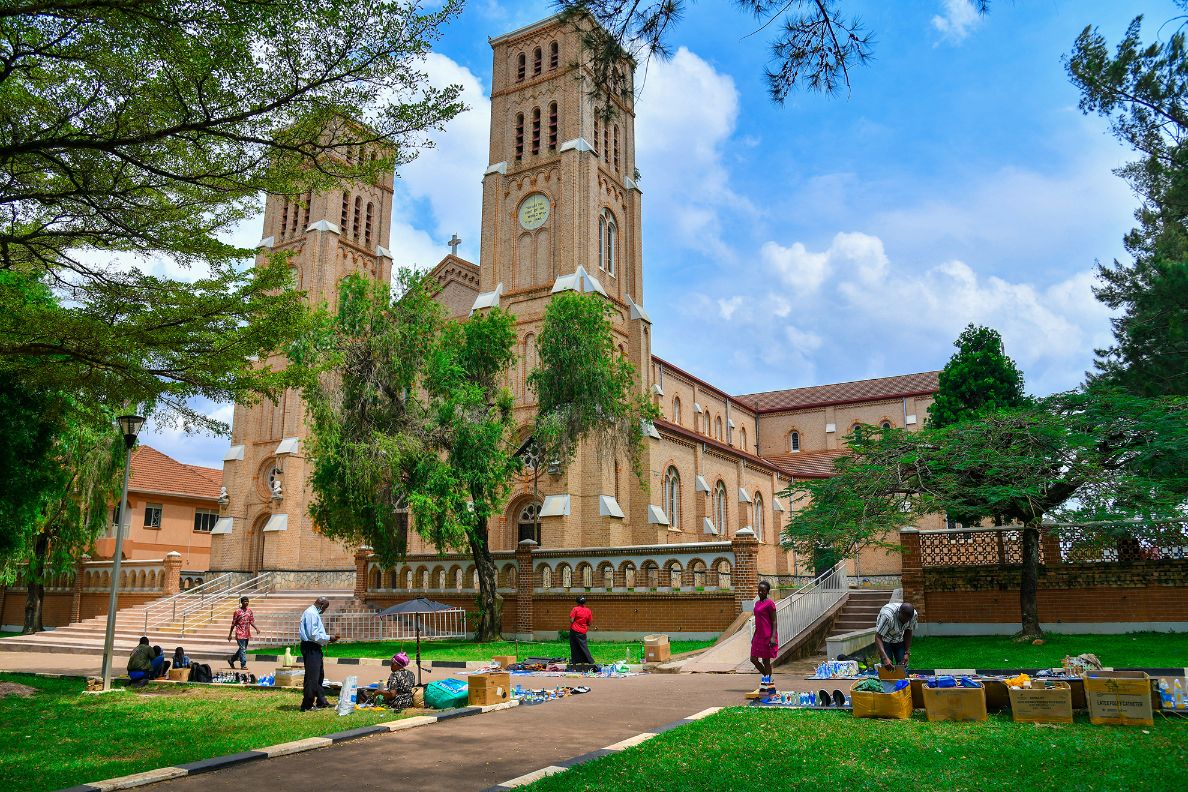
Daily Mass is held in both English and Luganda. Besides liturgical functions, the cathedral hosts state events, archdiocesan gatherings, and theological conferences.
Namirembe Cathedral (St. Paul’s Cathedral, Kampala)
Namirembe Cathedral sits across the valley from Rubaga, on Namirembe Hill. It is the oldest Anglican cathedral in Uganda, originally built in 1890 and rebuilt in brick between 1915 and 1919 after lightning struck earlier structures.
The cathedral is the seat of the Church of Uganda’s Diocese of Namirembe and once served as the headquarters of the entire Anglican Church in East Africa.
Its steeply pitched roof and wooden ceiling, supported by curved trusses, reflect a blend of European and local design techniques. The interior walls carry plaques dedicated to early missionaries, clergy, and local converts.
On top of its religious function, Namirembe Hill houses one of Uganda’s earliest missionary schools and medical centres, both still in operation.
Islamic Religious Landmarks
Uganda National Mosque (Gaddafi Mosque, Kampala)
The Uganda National Mosque sits on Old Kampala Hill. With a 15,000-person capacity, it is the largest mosque in East Africa.
Construction began under President Idi Amin in the 1970s but stalled after his fall. It resumed in 2001 through funding from Colonel Muammar Gaddafi. The mosque was officially opened in 2007 and named in his honour.
It features a prominent gold dome, two minarets, and interior walls lined with Quranic calligraphy. The elevated prayer gallery accommodates women. Guided tours provide access to the minaret, which offers panoramic views of Kampala’s seven hills.
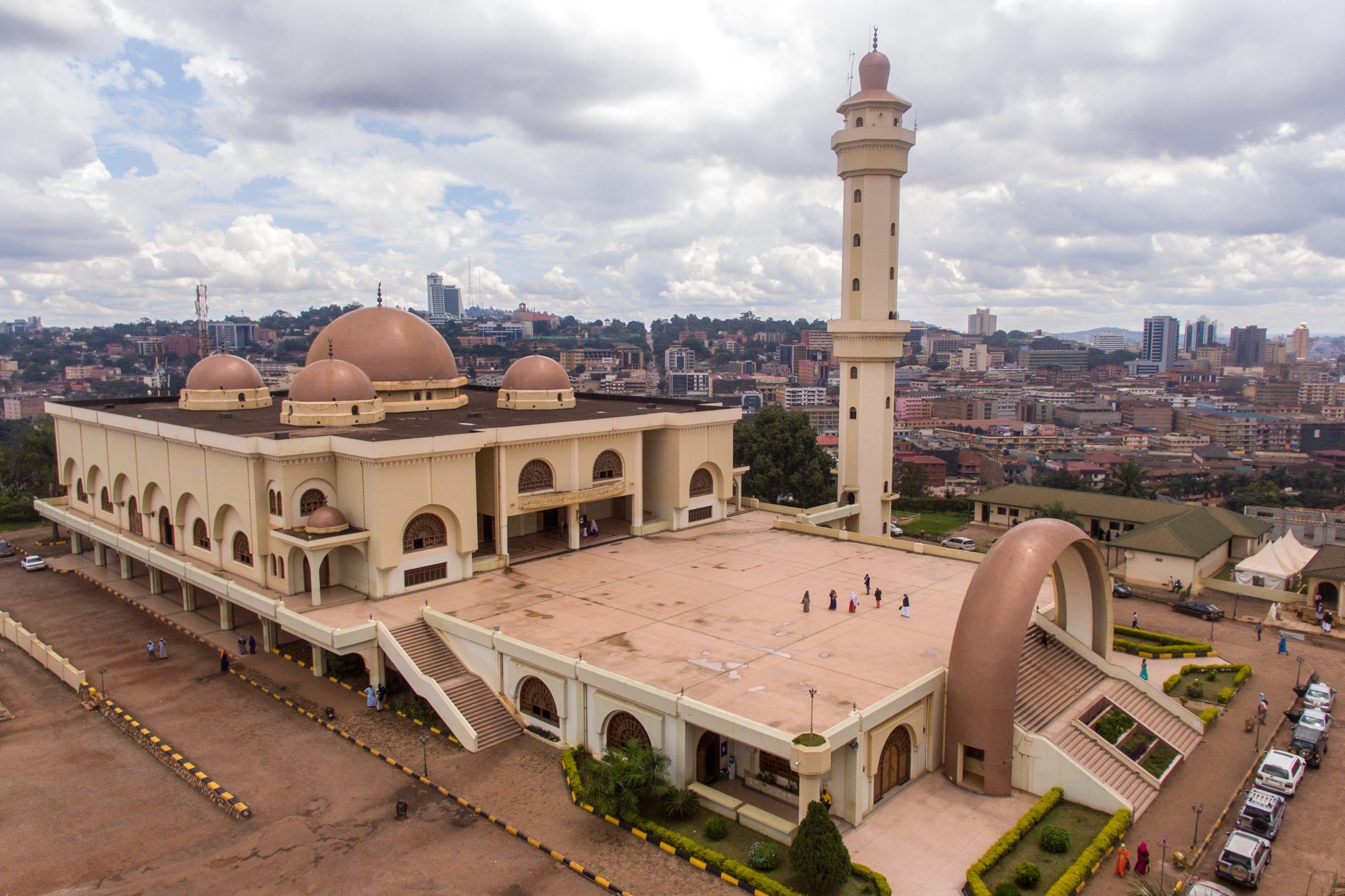
The mosque serves as the headquarters of the Uganda Muslim Supreme Council (UMSC). It also houses conference halls, administrative offices, and Arabic language schools.
Besides religious services, the mosque hosts interfaith dialogues, civic education forums, and diplomatic events.
If you plan a visit, modest dress is required. Headscarves for women and shoe covers are provided at the entrance.
Other Notable Islamic Sites
- Bombo Mosque (Luweero District): Originally built for Muslim military personnel under Amin, now used by a growing civilian population.
- Kibuli Mosque (Kampala): One of the oldest in the capital. Sits on Kibuli Hill and hosts a theological school and a secondary institution.
- Mayuge District Coastal Mosques: Small but historic sites linked to the early Arab coastal trade routes across Lake Victoria.
Uganda’s Islamic infrastructure is both urban and rural. Its historical depth is easy to overlook, but it speaks to sustained community-building over generations.
Indigenous And Traditional Spiritual Sites
Traditional spirituality in Uganda survives through oral memory, custodial roles, and sacred geography. These sites may not appear on formal maps, but they remain central to local cosmologies.
A. Naggalabi Buddo – Coronation Grounds of Buganda Kings
Naggalabi Buddo is located approximately 16 kilometres southwest of Kampala, in Wakiso District. It is the official site for the coronation of Buganda kings, known as Kabaka.
Every reigning Kabaka, including Kabaka Ronald Muwenda Mutebi II in 1993, has been crowned here. The ceremony is deeply spiritual and guided by clan-specific rituals.
The site contains ancestral shrines, spiritual enclosures, and sacred trees. Certain areas are restricted to royal spiritual custodians known as Balubaale intermediaries.
The land is under the jurisdiction of the Buganda Kingdom, and access is regulated. Visitors may tour with official permission, though ceremonies remain private.
Naggalabi is not simply a cultural site. It is a spiritual space where lineage, kingship, and divine mandate intersect visibly.
B. Mabira Forest Shrines
Mabira Forest covers over 300 square kilometres between Lugazi and Jinja. Scattered across the reserve are traditional shrines actively used by basamize (spirit mediums).
These shrines vary in size, from simple clearings with stones and calabashes to more elaborate sacred groves guarded by priests or priestesses.
Rituals performed here typically involve appeasement, healing, or communication with ancestral spirits. Offerings include local beer, millet flour, herbs, and animal parts.
In addition, some shrines are aligned with sacred trees such as Ficus natalensis, believed to house guardian spirits. Entry often requires consent from local custodians.
Conservationists working in Mabira now collaborate with spiritual leaders to protect both the forest and its ritual life. It’s a practical alliance.
If you’re visiting Mabira, take note: many of these sites are active, not symbolic. Silence and respect are expected.
C. Bulega Shrine (Kasubi Area, Kampala)
Tucked away near Kasubi Tombs, the Bulega shrine is a small but continuously functioning spiritual site. It serves the Baganda clans who maintain ancestral rites in urban settings.
Despite city encroachment, the shrine operates year-round. Ceremonies are held for birth blessings, illness intervention, or ancestral consultation.
Its custodianship rotates among clan elders, typically women known for lineage knowledge and spiritual sensitivity.
Besides its ritual function, the site is a case study in urban indigenous survival. Few tourists ever see it. Fewer still know it exists.
Yet for Kampala residents connected to this lineage, Bulega remains vital. It anchors kinship in a city that rarely stops expanding.
Interfaith Centres and Emerging Sites
Bahá’í House of Worship (Kampala)
Situated on Kikaaya Hill along Gayaza Road, this temple is one of only nine Bahá’í Houses of Worship globally. It was completed in 1961.
The structure stands 38 meters high with a nine-sided dome symbolising unity. Surrounded by 52 acres of gardens and forest, the compound includes a library, administrative offices, and meditation paths.
No clergy preside over services. Instead, readings from various faiths are shared during gatherings, often accompanied by a acapella music.
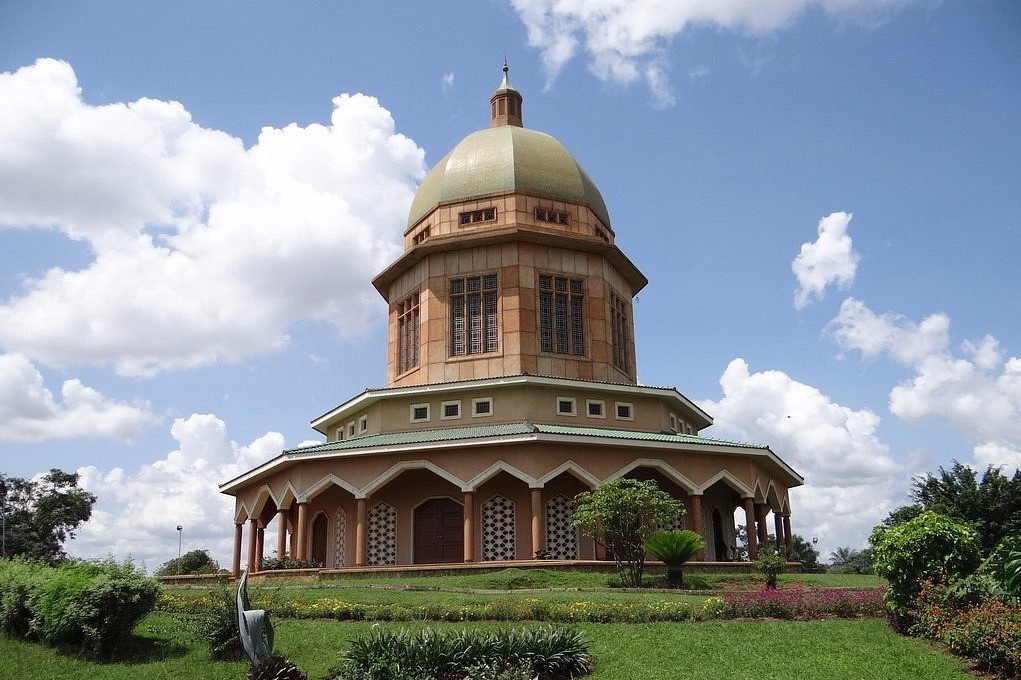
Uganda’s Bahá’í community numbers in the tens of thousands. The site functions as both a spiritual sanctuary and a venue for interfaith workshops and educational events.
Moreover, its open-door policy makes it one of Kampala’s most inclusive religious landmarks. If you want silence and symmetry, try visiting mid-morning on a weekday.
Pentecostal and Evangelical Mega-Churches
Kampala and Wakiso have become centres of Uganda’s evangelical Christian movement. Large-scale worship halls attract thousands each weekend.
Notable examples include Worship House in Nansana, Miracle Centre Cathedral in Rubaga, and Phaneroo Ministries.
These churches combine worship, music, healing sessions, and motivational preaching. Many operate schools, hospitals, media outlets, and microfinance schemes.
In addition, they host international conferences and prayer nights that bring in guests from Ghana, Nigeria, the US, and Kenya.
Although doctrinally independent, most of these churches share Pentecostal roots. They emphasise the Holy Spirit, prosperity theology, and personal salvation.
For the visitor, entry is usually unrestricted. Services run for hours and are often broadcast live on the radio and television.
Prayer Mountains and Revival Grounds
Scattered across Uganda are sites known as “prayer mountains.” These include Seguku Prayer Mountain, Kalongo Hill, and Muyenga Prayer Hill.
They typically feature open-air chapels, overnight dormitories, and fasting huts. Worshippers come for retreats, healing, or solitary prayer, often staying several days.
Prayer mountains have no formal doctrine. Most were founded by charismatic pastors and rely on donations. Services are informal, with spontaneous singing, foot-washing, and night vigils.
On top of that, some double as rehabilitation centres for drug users, domestic violence survivors, or ex-convicts.
Their emergence reflects a shift toward experiential, location-based spirituality within modern Ugandan Christianity.
Faith-Based Tourism in Uganda
Faith-based tourism in Uganda is shaped by pilgrimage, institutional conferences, and historical commemorations. While it remains under-promoted, its economic and social potential continues to grow.
Namugongo Martyrs Day on June 3rd is the country’s largest single-day pilgrimage. In 2023, attendance exceeded 1.5 million according to the Uganda Episcopal Conference. Pilgrims travel on foot from across East Africa.
Besides Namugongo, other faith-driven movements include Islamic Eid festivals, Pentecostal worship conventions, and regional Catholic youth rallies. These events often fill hotels, buses, and local guesthouses.
In addition, many visitors tour religious landmarks during general safaris or research trips. Sites like Rubaga Cathedral or the Gaddafi Mosque feature in Kampala city excursions.
Several religious institutions offer retreat centres. The Bahá’í House of Worship in Kanyanya, for example, receives hundreds weekly for prayer, meditation, or group study. It also hosts interfaith events and civic dialogues.
Logistical access to major faith sites is improving. Roads to Namugongo were upgraded ahead of Pope Francis’ 2015 visit. Similar improvements are ongoing near Islamic centres and royal coronation sites.
Moreover, some dioceses and mosques are beginning to coordinate with the Uganda Tourism Board (UTB) and district authorities to develop visitor materials, maps, and interpretation centres.
You may be wondering whether these experiences are curated or incidental. For most visitors, faith-based tourism in Uganda is spontaneous. Structured packages remain rare, except for the pilgrimage season.
This signals a missed opportunity. With the right partnerships, Uganda’s sacred geography could support both conservation and economic livelihoods.
READ ALSO: UNESCO Heritage Sites in Uganda
Conclusion
Faith in Uganda is mapped not only through denominations but through place. Shrines, mosques, cathedrals, and hills each carry layers of memory, identity, and ritual function.
These sites are more than locations for prayer. They store historical transitions, political alliances, and generational knowledge. Some speak through architecture. Others through silence.
Pilgrimage in Uganda is not confined to June or December. It unfolds year-round, in small footpaths, quiet reverence, and recurring ancestral rites. Planning around it requires patience, cultural literacy, and institutional coordination.
You, as a planner or researcher, might already know which shrine or mosque you want to visit. But pause first. Ask who maintains it. Ask what the land means to its custodians.
In the future, the success of religious tourism will depend less on monument count and more on how faithfully those monuments are contextualised, protected, and made accessible without being stripped of meaning.









